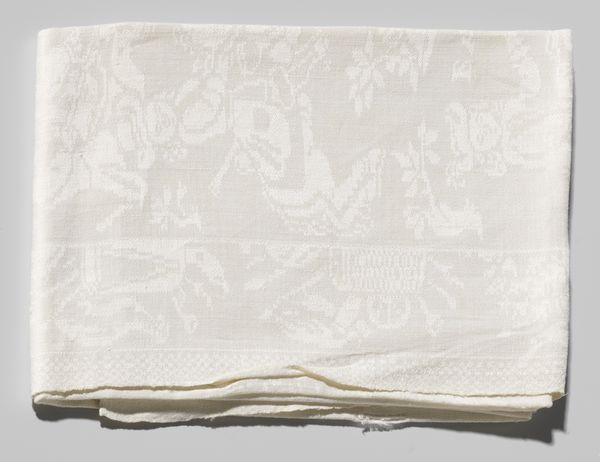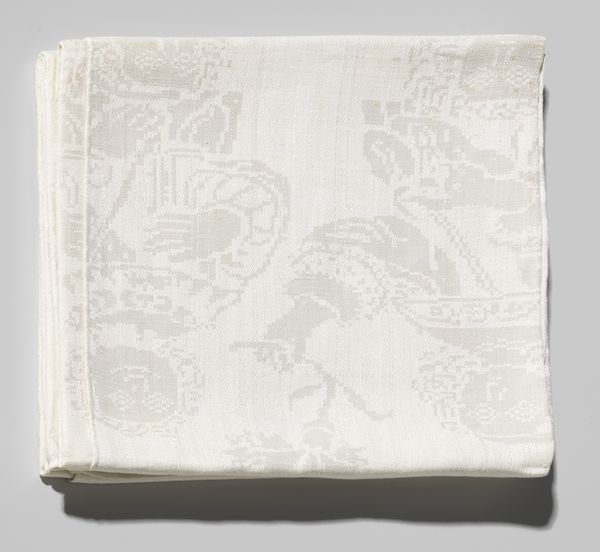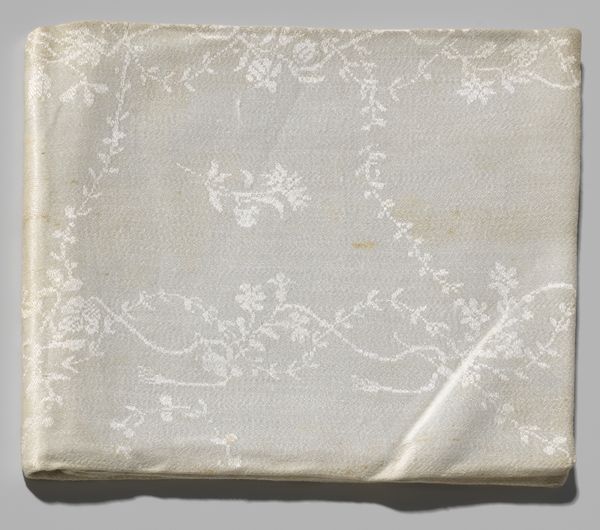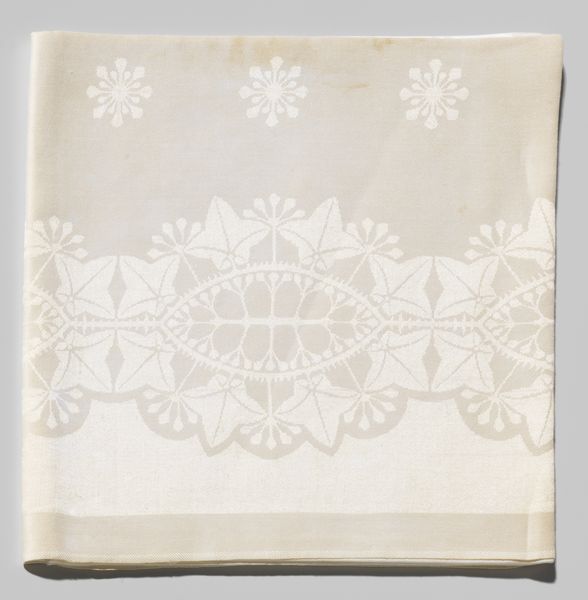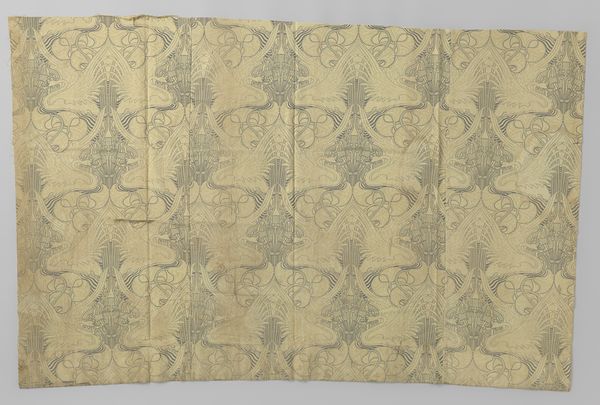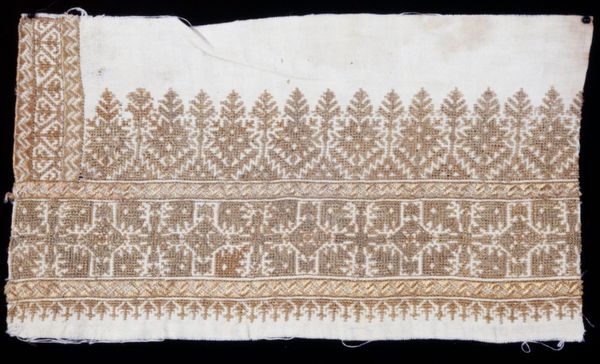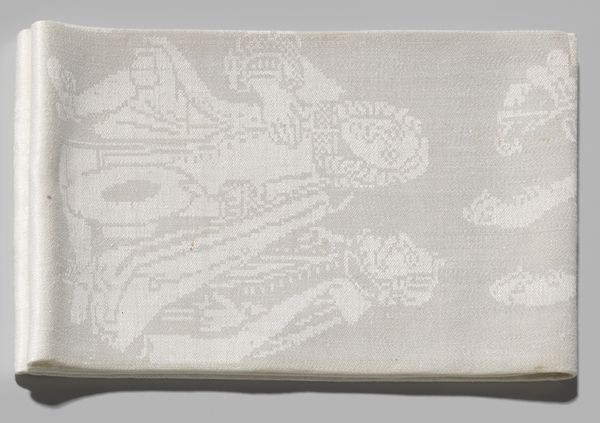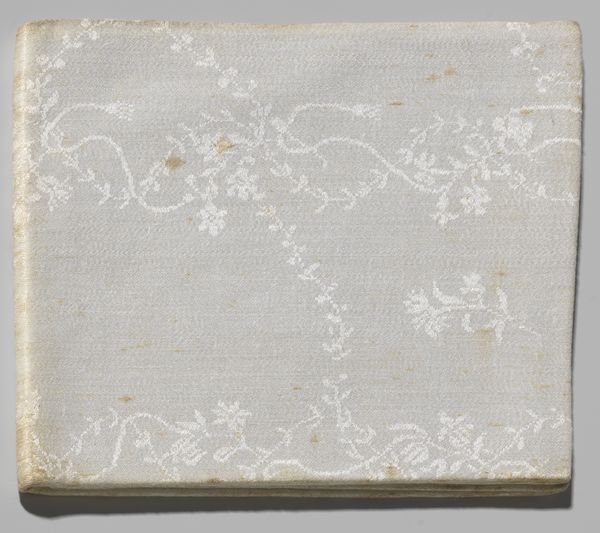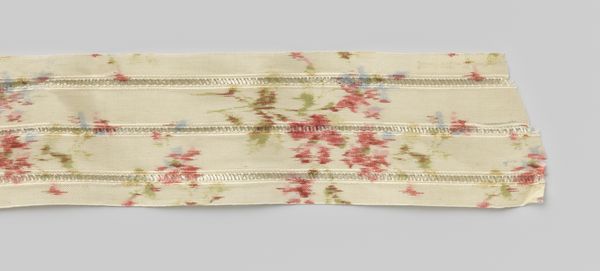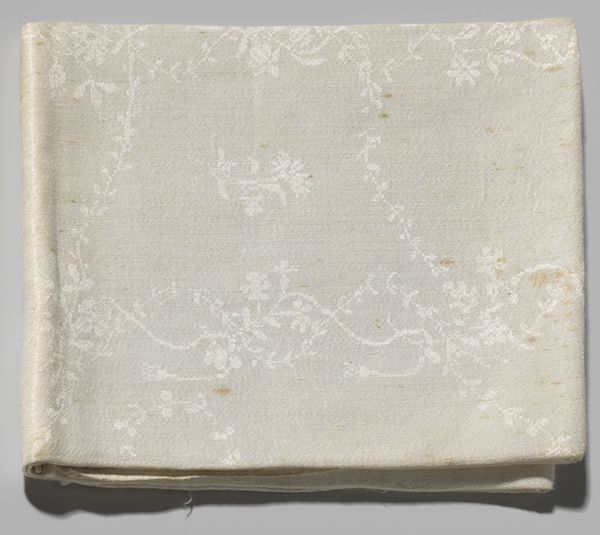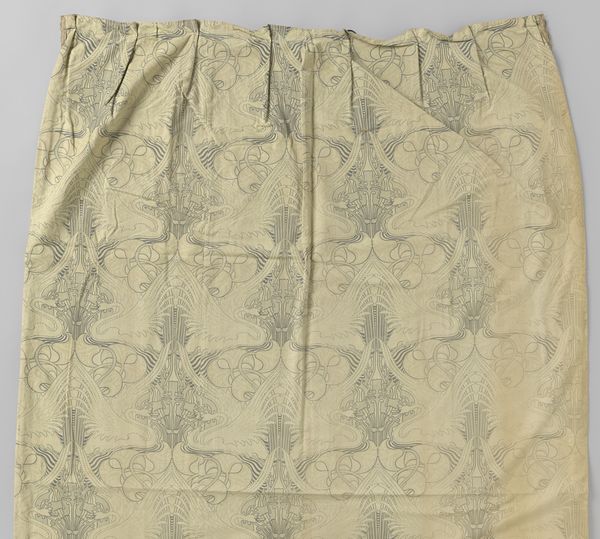
Servet met het wapen van Christiaan IV van Denemarken en het monogram CAK 1602
0:00
0:00
weaving, textile
#
weaving
#
textile
#
fabric design
#
textile design
#
decorative-art
Dimensions: height 95 cm, width 69 cm
Copyright: Rijks Museum: Open Domain
This linen damask napkin, featuring the arms of Christian IV of Denmark, was produced by Passchier Lammertijn in the Netherlands, likely in the late 16th or early 17th century. The Dutch Republic, during this period, was experiencing its Golden Age, driven by maritime trade. Textile production, including damask weaving, flourished in cities like Haarlem. Damask, with its intricate reversible patterns, was a luxury item, reflecting the wealth and status of its owner. The presence of Christian IV's coat of arms suggests this napkin was a commission, highlighting the Dutch Republic's role as a producer of luxury goods for European elites. The imagery creates meaning through its heraldic symbols, signifying power and lineage. To fully appreciate the cultural context, historians consult archival records, trade documents, and pattern books. Approaching this napkin through social and institutional lenses reveals the intricate connections between art, trade, and social status in the early modern period.
Comments
No comments
Be the first to comment and join the conversation on the ultimate creative platform.
